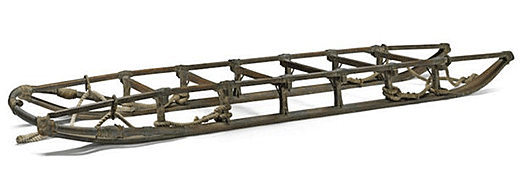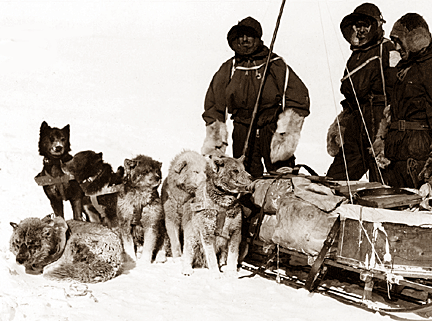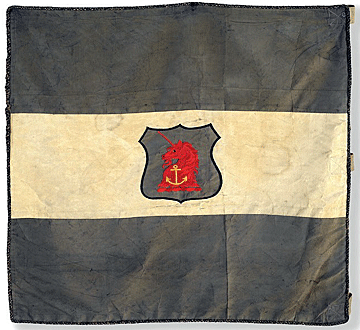|
Sledge From
Shackleton's Antarctic Expedition Takes Nearly $150,000 at Bonhams
by Roland Arkell
A sledge from the first expedition to the Antarctic led
by Ernest Shackleton sold for $150,000 (£115,000) in Bonhams’ Travel and
Exploration sale on February 6.

It was entered for sale by Monkton Combe School, the alma mater of Eric
Marshall (1879-1963) who was the expedition ship Nimrod’s surgeon,
cartographer and photographer. Marshall (1879-1963), a medic, rower and
rugby player, met Shackleton at a party in 1906, and volunteered for the
expedition on the spot.
The two men did not always see eye to eye. Marshall’s diaries frequently
expressed irritation and much later he would call his boss “the biggest
mountebank of the century”.
 However,
Shackleton chose Marshall alongside Jameson Adams, and Frank Wild to
undertake the four-man march to the South Pole. Although the quartet had
to abandon the attempt, in January 1907 they were within 100
geographical miles of the pole and, at the time, the furthest south ever
traveled. However,
Shackleton chose Marshall alongside Jameson Adams, and Frank Wild to
undertake the four-man march to the South Pole. Although the quartet had
to abandon the attempt, in January 1907 they were within 100
geographical miles of the pole and, at the time, the furthest south ever
traveled.
The sledge proved a superior form of transport than others chosen for
the expedition. One of the Nimrod sponsors was the Arrol-Johnston motor
company whose four-cylinder, 15-horsepower air cooled car was untested
in situations much less demanding than Antarctica.
 A
total of eighteen 11-foot (3.36 meters) long ash and hickory
sledges ‘of the Nansen pattern’ were purchased from LH Hagen and Company
for the expedition. Shackleton favored the size as the “best for general
work, for it was not so long as to be unwieldy, and at the same time was
long enough to ride over sastrugi and hummocky ice”. They were
pulled by ponies that gradually succumbed to the conditions. A
total of eighteen 11-foot (3.36 meters) long ash and hickory
sledges ‘of the Nansen pattern’ were purchased from LH Hagen and Company
for the expedition. Shackleton favored the size as the “best for general
work, for it was not so long as to be unwieldy, and at the same time was
long enough to ride over sastrugi and hummocky ice”. They were
pulled by ponies that gradually succumbed to the conditions.
Estimated at $78,270-130,450 (£60,000-100,000), the sledge was the
subject of competition from bidders in the room, on the phone and on the
internet. A sledge flag—also from Monkton Combe School which received
their donation from Marshall in 1952) sold for a further $78,270
(£60,000), plus a 25 percent buyer’s premium.
A number of other Nimrod sledges are known, including seven in The
Museum of New Zealand that were brought to New Zealand in 1917 with the
rescued men of the ‘Ross Sea Party’ and sold at auction in Wellington in
March of that year.
<
Back to Antiques News
|
